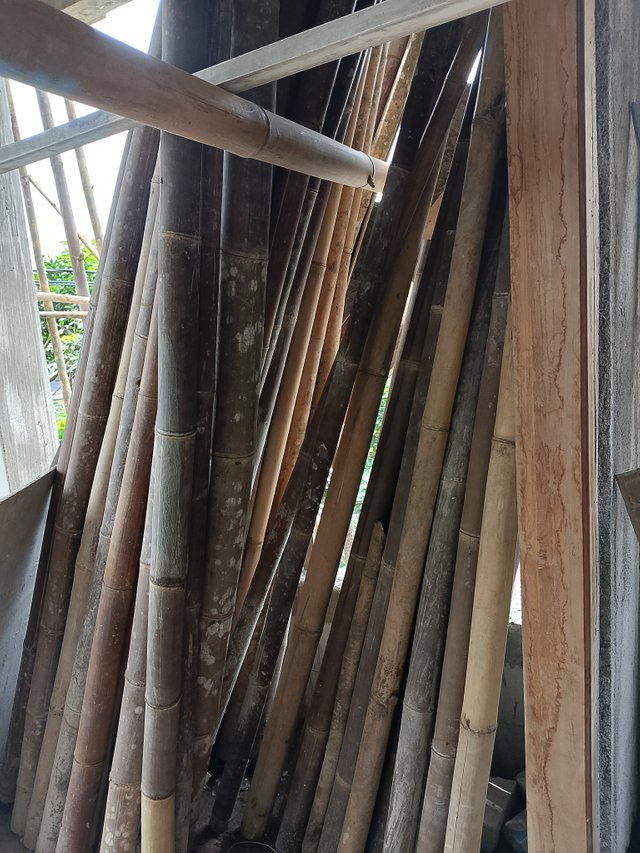When it comes to arranging bamboo, the decision to place it vertically or horizontally depends on the purpose, aesthetics, and practical considerations of the project. Both vertical and horizontal arrangements offer unique benefits, and the choice should align with the design goals and the space where the bamboo will be used. Here’s a breakdown of the differences between arranging bamboo vertically and horizontally.

- Vertical Bamboo Arrangement
Aesthetics and Design:
- Vertical bamboo arrangements create a sense of height and elongation. This makes them ideal for creating a striking visual focal point, especially in smaller or more compact spaces.
- Vertical bamboo can also evoke a sense of natural order and elegance, as it mimics the way bamboo grows in nature.
- It is often used in landscaping or as a fence or screening material to provide privacy or a decorative element in gardens, patios, or interiors.
Practical Considerations:
Stability: Vertical bamboo can be more stable when anchored properly. It is less likely to fall over compared to horizontal bamboo, especially if it's secured into the ground or attached to a wall.
Space-Saving: Vertical arrangements take up less floor space compared to horizontal ones, making them ideal for narrow or smaller areas.
Lighting and Airflow: In interior spaces, vertical bamboo can allow for better light distribution and airflow through the gaps between the stalks, making it a good choice for indoor environments.
Applications:
- Bamboo Fencing: Vertical bamboo is commonly used for fences, providing an aesthetic yet functional boundary.
- Indoor Decor: In homes, vertical bamboo stalks are often used in vases or as part of a decorative arrangement.
- Garden Privacy Screens: For gardens or patios, vertical bamboo can create a natural privacy screen while enhancing the outdoor ambiance.
- Horizontal Bamboo Arrangement
Aesthetics and Design:
- Horizontal bamboo arrangements often have a more rustic, relaxed, and laid-back look. This style can add a unique texture and warmth to a room or outdoor area.
- Horizontal bamboo can be arranged in patterns to create interesting visual effects, such as woven designs or wall art.
- This arrangement might be better suited for contemporary, eclectic, or bohemian styles, where an informal and natural look is desired.
Practical Considerations:
- Support and Stability: Horizontal bamboo arrangements can be more challenging to secure, especially if they are placed in large panels or used as furniture elements. They may require additional support to prevent shifting or falling.
- Space Usage: Horizontal bamboo takes up more floor or wall space, which might not be ideal for small areas. However, it can work well in larger spaces where you want to cover more area with bamboo.
- Functionality: Horizontal bamboo is often used for shelving, furniture, and wall panels, where stability and support are important. It can be used to create functional elements such as tables or storage units.
Applications:
- Bamboo Shelving or Furniture: Horizontal bamboo is commonly used in the construction of shelves, tables, or other furniture pieces, providing a sturdy and eco-friendly alternative to wood.
- Wall Panels: Horizontal bamboo can be arranged as decorative panels on walls to create a feature wall or a natural texture in living rooms, offices, or restaurants.
- Garden Borders: In larger gardens, horizontal bamboo is sometimes used as a decorative edge or border to create a distinctive and natural frame.
- Choosing Between Vertical and Horizontal Bamboo
Consider the following factors when choosing between vertical and horizontal bamboo arrangements:
- Space Constraints: In smaller spaces, vertical bamboo is often the better option as it takes up less horizontal space. It can also help create the illusion of height in a room.
- Purpose of the Bamboo: If you're looking for bamboo to create a functional piece, such as a table or shelf, horizontal bamboo may be the best choice. For decorative purposes, vertical bamboo may provide the striking effect you're looking for.
- Aesthetic Preferences: Vertical bamboo gives a more structured and formal look, while horizontal bamboo provides a more relaxed, casual, and rustic feel. Your aesthetic preferences and the overall design theme of the space should guide your decision.
Whether you choose to arrange bamboo vertically or horizontally depends on your specific needs and design goals. Vertical bamboo is ideal for creating height, structure, and privacy, making it perfect for fencing, garden screens, and indoor decorative arrangements. On the other hand, horizontal bamboo is often better suited for furniture, shelving, and wall panels, providing a rustic or contemporary look to a space. Ultimately, both arrangements offer unique benefits, and you can even combine both styles to create a balanced and dynamic design.
Upvoted! Thank you for supporting witness @jswit.
Downvoting a post can decrease pending rewards and make it less visible. Common reasons:
Submit